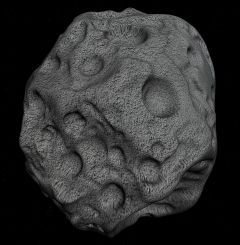Difference between revisions of "Phoebe"
Jump to navigation
Jump to search
(Added table line item.) |
(Added table line item.) |
||
| Line 62: | Line 62: | ||
|- | |- | ||
|[https://www.orbiter-forum.com/resources/celestial-bodies-motion-part-2-4-v2-0-0.295/ Celestial Bodies Motion - Part 2/4 - v2.0.0]||O-F Resources||v2.0.0||cristiapi||Scenery||2 July 2015||*module only|| | |[https://www.orbiter-forum.com/resources/celestial-bodies-motion-part-2-4-v2-0-0.295/ Celestial Bodies Motion - Part 2/4 - v2.0.0]||O-F Resources||v2.0.0||cristiapi||Scenery||2 July 2015||*module only|| | ||
| + | |- | ||
| + | |[https://www.orbiter-forum.com/resources/celestial-bodies-motion-part-1-4-v2-0-0.132/ Celestial Bodies Motion - Part 1/4 - v2.0.0]||O-F Resources||v2.0.0||cristiapi||Scenery||2 July 2015||*module only|| | ||
|- | |- | ||
|[https://www.orbiter-forum.com/resources/saturn-moons.3813/ Saturn Moons]||O-F Resources||2014-09-21||T1234||Scenery||21 September 2014|||| | |[https://www.orbiter-forum.com/resources/saturn-moons.3813/ Saturn Moons]||O-F Resources||2014-09-21||T1234||Scenery||21 September 2014|||| | ||
Latest revision as of 13:34, 10 November 2024
| Phoebe | |
|---|---|

| |
| Phoebe from Saturn Moons.zip in Orbiter 2016 with D3D9 | |
| Designation | |
| Name | Phoebe |
| Reference body | Saturn |
| Planetary mean orbits | |
| Epoch | 2014.39014373717 |
| Semimajor axis (a) | 12995759988.095 m |
| Eccentricity (e) | 0.0000156144511577606 |
| Inclination (i) | 0.0151781240198135° (0.000264908238421783 radian) |
| Longitude of the ascending node (LAN, ☊) | 208.626701831817° (3.6412228545417 radian) |
| Longitude of periapsis (ϖ) | 104.242486953736° (1.81937461780992 radian) |
| Mean longitude (L) | 108.701283931732° (1.89719530575393 radian) |
| Selected physical parameters | |
| Mean radius | 3000 km |
| Mass | 7.8×1015 kg |
| Rotation elements | |
| SidRotPeriod | 65657.58530145804 seconds (18.2382 hours) |
| SidRotOffset | 0 |
| Obliqutiy | 1.09044646015132 |
| LAN | 5.24385919090949 |
| Note | *Elements given are from Phoebe.cfg (Saturn Moons.zip) |
Phoebe (Saturn IX) is a retrograde irregular satellite of Saturn and is the most massive irregular satellite of Saturn. It was discovered by William Henry Pickering on 18 March 1899, and was the first satellite discovered photographically.
Phoebe is named after a Titaness in Greek mythology.
It is responsible for the Phoebe Phoebe ring of Saturn.
Phoebe in Orbiter[edit]
Phoebe was introduced to Orbiter with the release of outerplanets-050125.zip in January 2005.
| Add-on | Source | Version | Author | Type | Release Date | Compatibility | Wiki article |
|---|---|---|---|---|---|---|---|
| Celestial Bodies Motion - Part 2/4 - v2.0.0 | O-F Resources | v2.0.0 | cristiapi | Scenery | 2 July 2015 | *module only | |
| Celestial Bodies Motion - Part 1/4 - v2.0.0 | O-F Resources | v2.0.0 | cristiapi | Scenery | 2 July 2015 | *module only | |
| Saturn Moons | O-F Resources | 2014-09-21 | T1234 | Scenery | 21 September 2014 | ||
| The Outer Planets 060929 Base | AVSIM | Rolf Keibel Carl Romanik Tony Dunn |
Scenery | 30 September 2006 | Orbiter 2006-P1 | ||
| The Outer Planets 050125 | AVSIM | 050125 | Rolf Keibel Tony Dunn |
Scenery | 26 January 2005 | Orbiter 2005-P1 | |
See also[edit]
Gallery[edit]
Phoebe as imaged by the Cassini probe in June 2004
from Wikimedia Commons
| edit The Solar System | |
|---|---|
| Central star |
Sun (Sol) |
| Planets |
Mercury - Venus - Earth - Mars - Jupiter - Saturn - Uranus - Neptune |
| Natural satellites |
Moon - Phobos - Deimos - Io - Europa - Ganymede - Titan - more... |
| Add-ons |
Planets - Dwarf Planets - Small objects - Natural satellites - Alternative star systems |
 | This natural satellite related article is a stub. You can help Orbiterwiki by expanding it.
|




